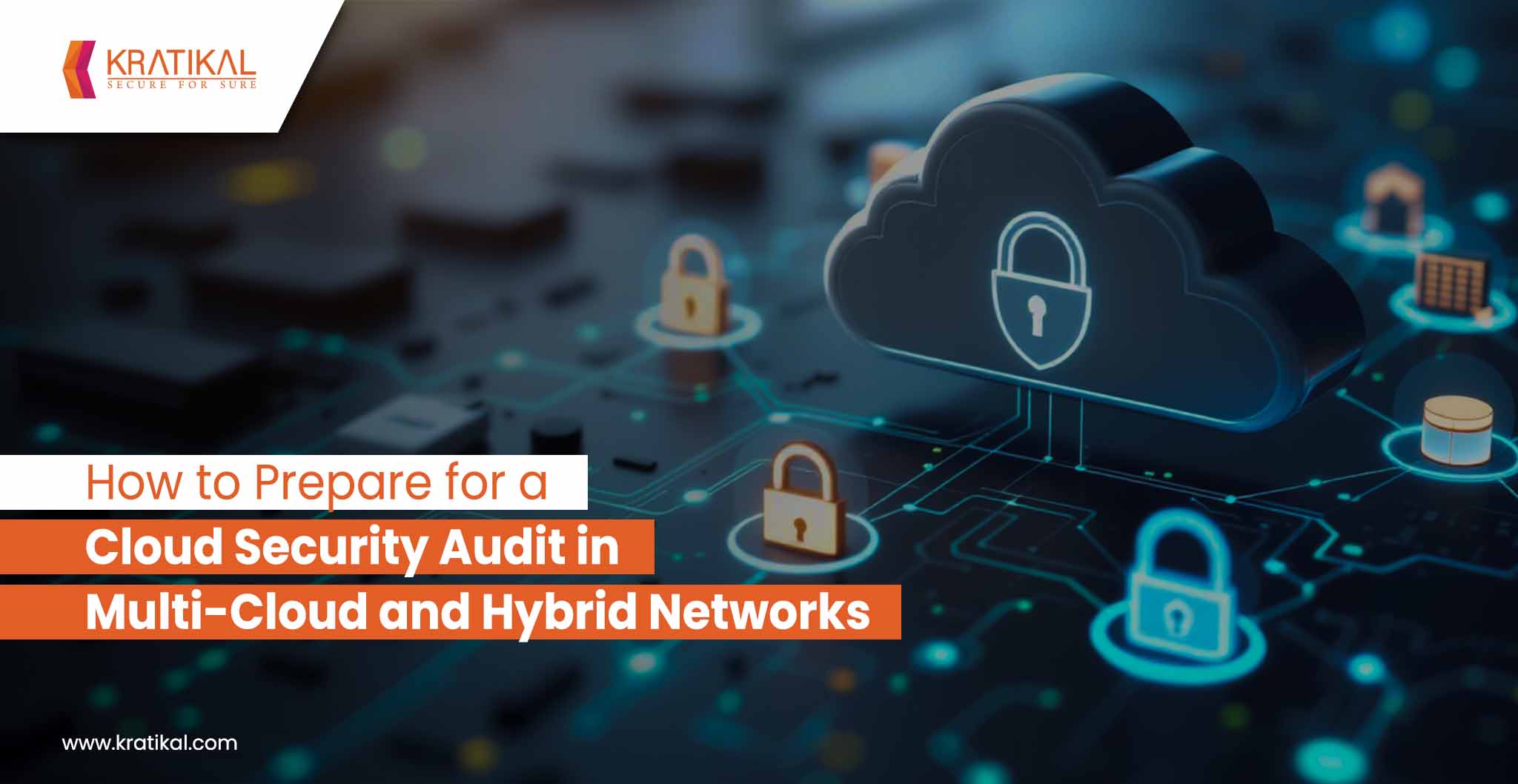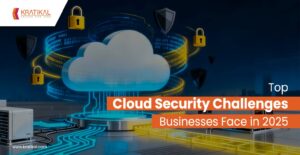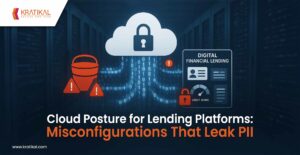Here is the easiest explanation! Cloud security audit are formal evaluations of an organization’s cloud environments to verify that security controls meet industry standards and regulatory requirements. As businesses are increasingly adopting multi-cloud and hybrid architectures, security audits have grown more critical and more complex. In fact, 89% of companies utilizing multi-cloud and 73% having hybrid clouds, face new challenges for security visibility and consistency. A cloud security audit helps identify vulnerabilities, misconfigurations, and compliance gaps before hackers and auditors do. Such audits strengthen your security posture and regulatory compliance as well as boost customer and stakeholder confidence in your cloud operations. Preparing thoroughly for a cloud security audit in a multi-cloud/hybrid environment is essential to avoid last-minute scrambles. This article provides step-by-step actionable preparation steps from inventory and compliance mapping to leveraging CSPM tools along with common challenges and best practices.
Table of Contents
- 1 Book Your Free Cybersecurity Consultation Today!
- 1.1 Step-by-Step Cloud Security Audit Preparation Guide
- 1.1.1 Inventory and Asset Visibility
- 1.1.2 Align with Regulatory Compliance Requirements
- 1.1.3 Leverage CSPM Tools for Real-time Monitoring and Compliance
- 1.1.4 Strengthen Identity and Access Management (IAM) Controls
- 1.1.5 Implement Comprehensive Logging and Monitoring
- 1.1.6 Ensure Data Classification and Encryption for Cloud Security Audit
- 1.1.7 Verify Incident Response Readiness
- 1.1.8 Prepare Documentation and Evidence for Cloud Security Audit
- 1.1 Step-by-Step Cloud Security Audit Preparation Guide
- 2 Get in!
Book Your Free Cybersecurity Consultation Today!
Step-by-Step Cloud Security Audit Preparation Guide
If you are new to cloud security audit, here’s everything you need to know:
Inventory and Asset Visibility
- Create a complete inventory of all cloud and on‑premise assets to gain full visibility.
- In multi‑cloud or hybrid networks, resources such as VMs, containers, databases, storage, and network devices are spread across platforms.
- Use native tools like AWS Config, Azure Resource Graph, GCP Asset Inventory, to auto‑discover them or take help from CERT-In Empanelled Security Auditors to help you from start to finish.
- Record details like owner, classification, region, and vulnerabilities.
- Update this inventory regularly as environments change quickly.
Reason: Full asset visibility prevents shadow IT, ensures audit scope is complete, and links assets to relevant controls and compliance needs.
Align with Regulatory Compliance Requirements
- Identify and document all regulations, standards, and frameworks relevant to your cloud environment. These include laws like GDPR, industry rules like HIPAA or PCI DSS, and frameworks such as ISO 27001, SOC 2, or NIST SP 800‑53.
- Understand the shared responsibility model used by cloud providers to secure the infrastructure, while you configure and use services compliantly.
- Align internal policies with these requirements and use frameworks like CIS Controls or the NIST Cybersecurity Framework as checklists.
Reason: Mapping assets and processes to regulations creates a clear audit matrix, ensures compliance, and prevents audit surprises.
Leverage CSPM Tools for Real-time Monitoring and Compliance
- Cloud Security Posture Management (CSPM) tools help prepare for multi‑cloud audits by continuously checking cloud configurations against best practices and mapping vulnerabilities against compliance policies in real-time.
- CSPM with AI-powered platforms like AutoSecT give a unified view across AWS, Azure, GCP, and on‑prem resources, flag misconfigurations, enforce consistent policies, and include built-in checks for standards like ISO 27001, SOC 2 and NIST SP 800-53.
- CSPM automates evidence gathering and compliance reporting, reduces manual work, and provides real‑time alerts to improve incident response.
Reason: AutoSecT enables continuous audit readiness across cloud providers like AWS, Azure and GCP preventing last‑minute scrambling.
Strengthen Identity and Access Management (IAM) Controls
- Strong Identity and Access Management (IAM) is essential for cloud security audits.
- In multi‑cloud or hybrid setups, manage identities across AWS IAM, Azure AD, Google IAM, and on‑prem directories.
- Enforce least privilege by removing unused accounts and limiting permissions.
- Require MFA for all privileged access to add an extra security layer.
- Centralize identity management with unified directories or SSO for consistent control.
- Regularly audit IAM policies and logs using tools like access analyzers or CIEM solutions to find misconfigurations or inactive accounts.
- Document user roles and mappings to business functions to show proper governance.
Reason: Tight IAM controls reduce risks from stolen credentials or insider threats and demonstrate readiness during audits.
Implement Comprehensive Logging and Monitoring
- Enable centralized logging across all cloud and on-prem systems using tools like SIEM.
- Collect key logs from cloud platforms, OS, apps, firewalls, and IDS.
- Monitor continuously with alerts for suspicious activity using tools like AutoSecT.
- Keep logs securely for compliance periods with tamper-proof storage.
- Regularly review logs and use automated detection tools.
Reason: Unified logging across multi-cloud setups ensures clear audit trails and fast issue detection.
Ensure Data Classification and Encryption for Cloud Security Audit
- Classify your data across all environments to identify sensitive, regulated, or mission-critical information like PII, financial, and health data.
- Encrypt sensitive data at rest with strong algorithms and manage keys securely using cloud-native services like AWS KMS or Azure Key Vault.
- Ensure encryption in transit with TLS and secure links between on-prem and cloud.
- Enforce data loss prevention (DLP) and governance policies to control where and how data is stored or transmitted.
- Use strict access controls through granular IAM policies and monitoring to limit data access to authorized users only.
- Implement backup and recovery processes that meet encryption and location regulations.
Reason: These measures demonstrate strong data protection, reducing risk from misconfigurations and ensuring compliance during audits
Verify Incident Response Readiness
- To be prepared for cloud security incidents, develop a detailed incident response plan covering detection, containment, eradication, and recovery, tailored for multi-cloud and hybrid environments.
- This plan should include contact information for cloud providers, log retrieval procedures, and communication strategies across teams.
- Regular penetration testing through simulations or drills is essential, with documentation of these exercises as evidence for audits.
- Additionally, compile an incident evidence kit with tools for forensic analysis, like logs and snapshots, and clearly define roles and communication channels for all involved teams
Prepare Documentation and Evidence for Cloud Security Audit
For a smooth cloud security audit, start early by gathering and organizing essential documents and evidence:
- Keep all cloud security policies updated and approved.
- Have current diagrams showing cloud and on-prem connections with security controls marked.
- Maintain hardened configuration records and Infrastructure as Code scripts as evidence.
- Retain past audit reports and show how issues were fixed.
- Collect results from vulnerability scans and penetration tests.
- Document staff training on security and cloud practices.
- Provide mappings of controls to regulations and a cloud risk register if available.
- Gather proof that controls work, like screenshots of encryption settings, IAM policies, logs, and reports from security tools.
Get in!
Join our weekly newsletter and stay updated
Cloud Security Audit Readiness Checklist
| Checklist | Highlights |
| Complete Asset Inventory | Catalog all cloud and on-premise resources with owners and classifications for full audit visibility |
| Compliance Mapping | Identify all relevant regulations and standards and map security controls accordingly |
| Real-time Monitoring | Use a CSPM tool or equivalent for unified, multi-cloud monitoring with automated alerts on compliance and configuration issues |
| Hardened IAM | Apply least privilege access, enforce MFA for admins, review access periodically, and revoke unnecessary permissions |
| Active Logging & Monitoring | Centralize logs from all platforms, maintain 24/7 security monitoring with alerts, and securely retain logs per policy |
| Data Protection | Classify sensitive data, encrypt it at rest and in transit with strong key management, and secure backups complying with data residency rules. |
| Incident Response Preparedness | Document and regularly test a cloud-focused incident response plan with clear roles, cloud provider contacts, and forensic procedures |
| Organized Documentation | Maintain up-to-date policies, network diagrams, configuration baselines, training records, past audits, and evidence showing controls in action |
FAQs
- What is a cloud security audit and why is it important?
A cloud security audit checks your cloud setup against standards and rules to find risks early, improving security and trust.
- How do I prepare for a multi-cloud security audit?
Prepare by inventorying assets, mapping compliance rules, using CSPM tools, securing access, enabling logging, encrypting data, planning incident response, and organizing documents.
- What role do CSPM tools play in cloud security audits?
CSPM tools continuously monitor clouds, spot misconfigurations, automate reports, and send real-time alerts to keep you audit-ready.








Leave a comment
Your email address will not be published. Required fields are marked *